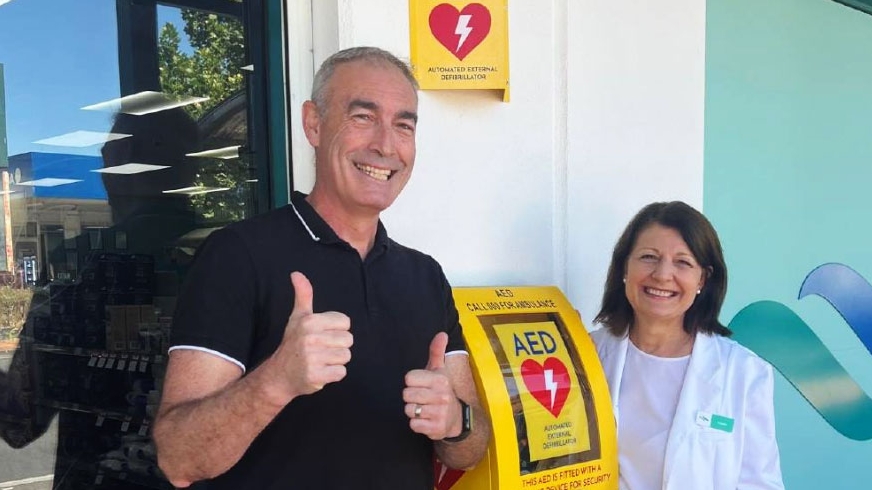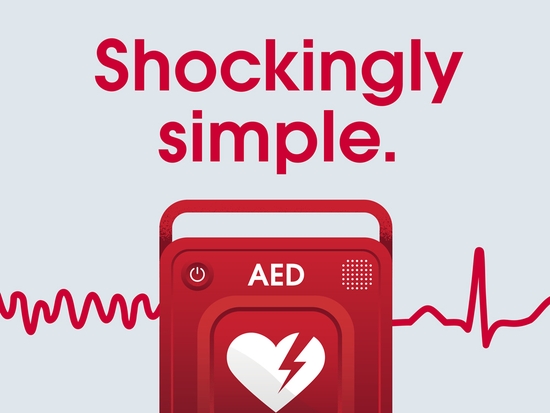
Cardiac arrest: There is no training required to save a life, just a little education
Blog: 7 December, 2023
Guest authored by Greg Page, on behalf of Heart of the Nation
Someone collapsing suddenly in front of you is a very confusing and confronting situation.
Particularly in the case of sudden cardiac arrest, because this is when someone’s heart abruptly stops beating, for no apparent or obvious reason. When this happens, the actions of bystanders can make a huge difference to the person’s chances of survival – but would you know what to do?
Check for response
If someone is unconscious, or unresponsive, they will look like they are asleep. Not being able to wake someone up is not a good thing. After checking the area for danger, proceed to see if you can wake them up by using the COWS acronym:
- Can you hear me?
- Open your eyes.
- What’s your name?
- Squeeze my hand.
CALL
If the person can’t do any of these things, it is time to get emergency services on their way.
Call 000 straight away and place your phone on speaker. If there are other people around, ask someone to find the nearest AED (defibrillator).
Check their breathing
Normal breathing is quiet and effortless. Gasping, choking, gurgling or snoring sounds means that someone is not breathing normally. If the person is struggling to breathe (or not breathing at all), and can’t be woken up, it is time to start CPR and use the AED as soon as it becomes available.
PUSH – how to do CPR
Once you have called 000, it is time to start CPR.
Ensure that the person is on the floor or another hard surface. Doing CPR on a bed or lounge is not going to be effective, because you need a hard, resistant surface to help with the compressions. Once they are on the floor, kneel down beside them with your knees about shoulder-width apart.
Place the heel of the palm of one of your hands in the centre of their chest. To find the centre of their chest, draw a line down the centre of their ribs, and another line across their chest from the bottom of one armpit directly to the other armpit.
With the other hand on top of your first hand, ensure your body weight is over the top of the person, and your shoulders are directly above their chest. Keep your elbows straight and use your body weight to rock up and down on them, pushing to a depth of about 5 cms, or 1/3 depth of the person’s chest. You may hear ribs cracking, or breaking, and that is ok. You are giving the person a chance to survive. Their broken ribs will heal.
Push hard and fast, at a rate of about 2 beats per second. Think of the song “Staying alive” by the Bee Gees, or “Fruit salad, yummy, yummy” by The Wiggles, or “Keep the Beat Going” by yours truly! Pushing to the beat of either of these songs will help you push at the correct tempo.
Hands only CPR is OK!
Some people do not attempt CPR on a stranger (or even someone they know) because they think they have to perform “the kiss of life.” This is putting their mouth on the mouth of the person who has lost consciousness to help oxygenate their blood. This is not the case. Although performing breaths can sometimes result in a better outcome, if you are not willing or confident to do the breaths, you can still keep the blood flowing around the person’s body by performing hands only CPR.
SHOCK – use the AED as quickly as possible
When the AED arrives, open it up and get it talking to you ASAP! AEDs will provide you with audible voice instructions. That means you do not need to be trained or qualified to use an AED.
Most AEDs will have a power button that you press to turn it on. Some of them have a lid or case that you open and start talking straight away. If it is not talking to you, get it talking, because it will become your team leader.
Remove the clothing from the person’s chest, and place one pad of the AED above the right chest/breast, and the other pad below the left chest/breast and slightly on the side.
Once this has been done, follow the voice prompts of the AED – if it says to continue doing CPR, do CPR. If it says to stand clear, stand clear.
Keep the pads on the person until the paramedics arrive. If they start breathing and regain consciousness, place them on their side in the recovery position. Keep monitoring their breathing and commence CPR again if it becomes abnormal and they lose consciousness again.
Why we do CPR and use an AED
An AED is used to reset the electrical system of the heart. When someone is in cardiac arrest, the electrical impulses that tell the heart how to beat are disturbed. This disruption means that blood isn’t being pumped around the body. This is why we need to do CPR (to manually pump the blood for the person) and use the AED (to reset the electrical system of the heart). But the AED needs to be used while there is still electrical activity present – it doesn’t hang around forever, so time matters.
Spread the word
Because there are no qualifications required to save a life, spread the simple message of CALL, PUSH, SHOCK to everyone you know. No one should ever think that they are not qualified to save the life of someone who is in cardiac arrest, because at the end of the day, superheroes don’t wear capes, they just give it a go!
You might also be interested in...

Heart attack vs cardiac arrest – know the difference
Learn the difference between heart attack and cardiac arrest, their symptoms, survival rates, and prevention tips to help you respond in an emergency.

Shockingly Simple
Learn what an AED is and what you can do during a cardiac arrest.
.jpg?width=560&height=auto&format=pjpg&auto=webp)
Do you have a Heart Story to share?
By sharing your heart story, you can help save lives. You can tell others about the warning signs of a heart attack, the importance of a Heart Health Check, or even what it’s like to live with chronic heart disease.
Last updated09 November 2025
Last reviewed30 November 2018